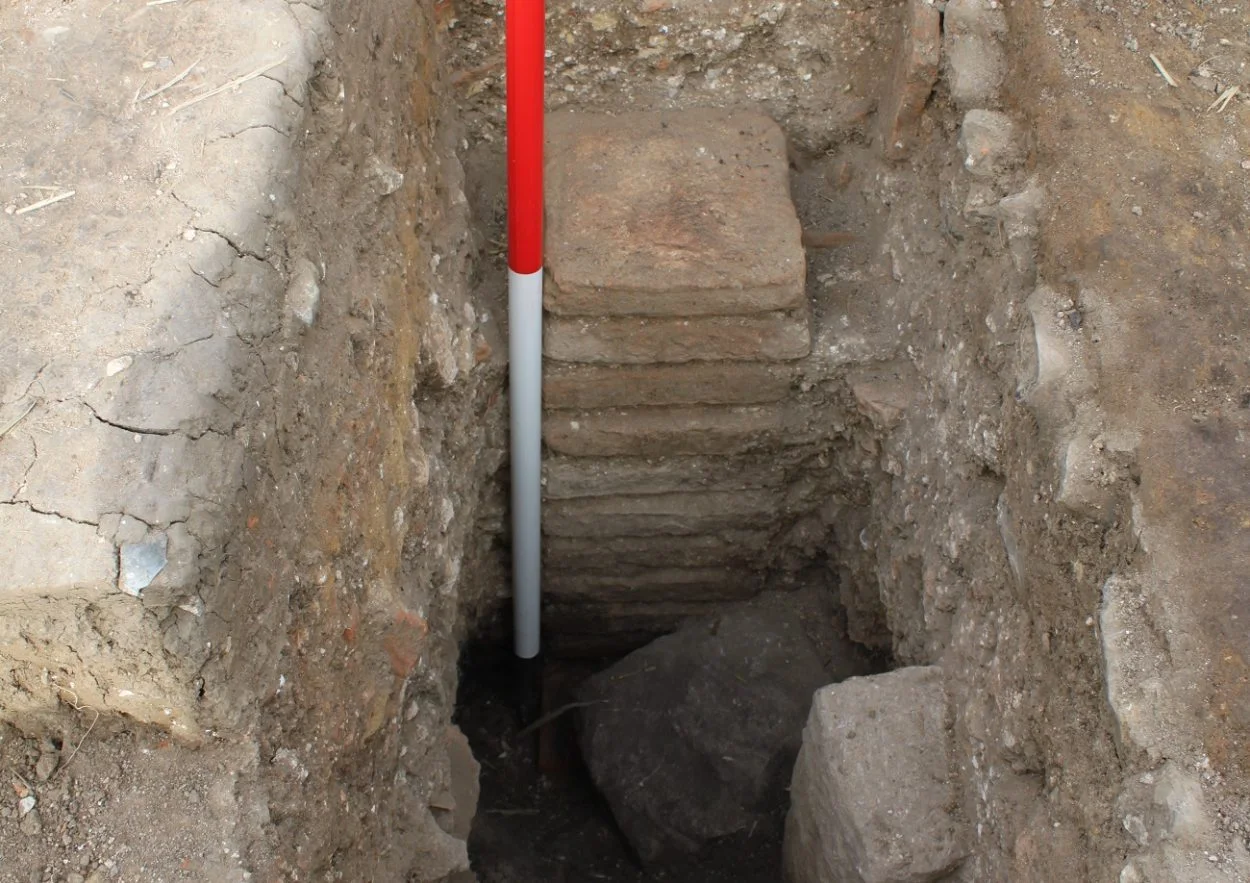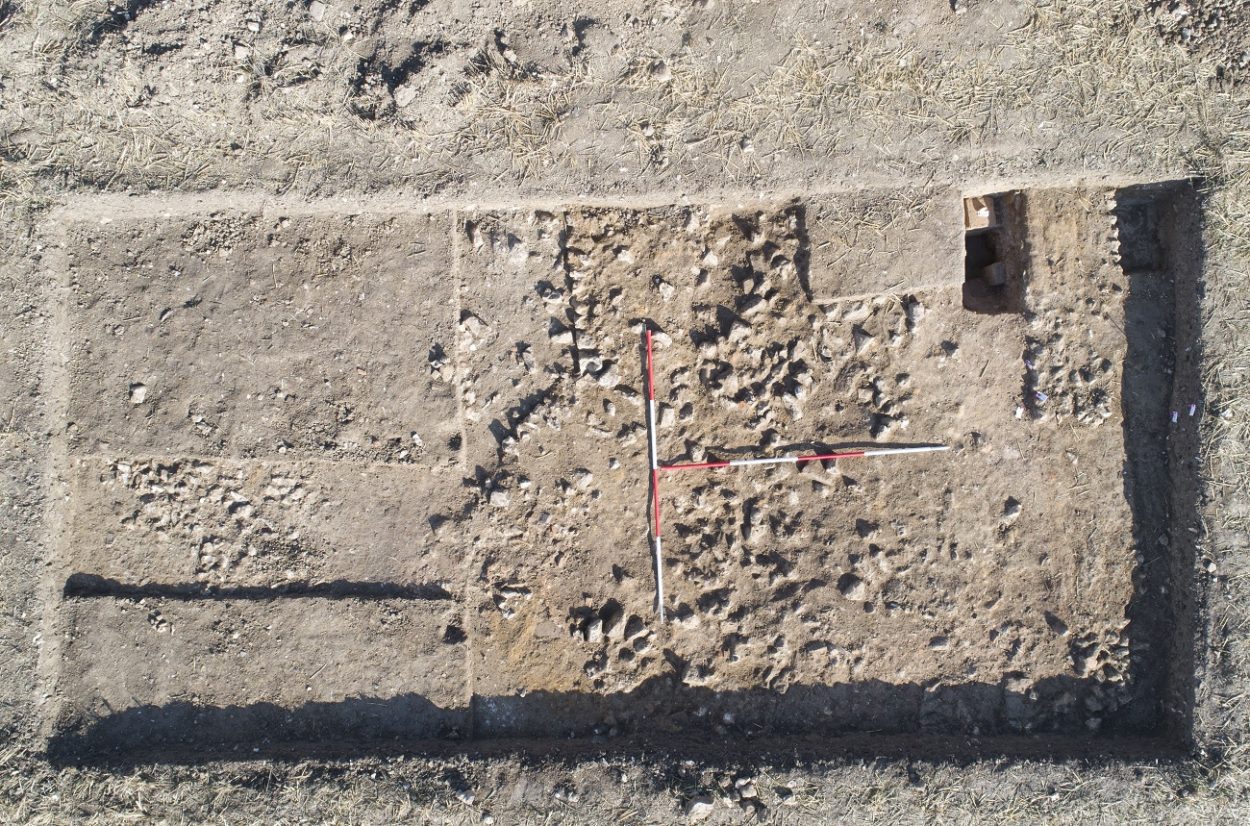Archaeologists from the Kent Archaeological Society have uncovered a Roman villa complex, in addition to a bath house and hypocaust system near Trosley, Kent.
The villa was first identified using Google Earth Images, revealing crop markings which outlined the linear features of the site.
The Kent Archaeological Society, working in collaboration with volunteers as part of a community excavation project, excavated the wall foundations of the main villa building, in addition to a pillar – known as a pilae stack, which is a partially intact hypocaust system (an early system of central heating during the Roman period) used in an adjacent bath house.
Site director, Richard Taylor, who led the excavation said: “There are many villa’s spread across Kent, but the fact there’s a hypocaust system remaining is rare. Operating a hypocaust was expensive, requiring a constant supply of fuels – firewood – and a workforce to operate it.”

“The system worked on the principle of hot gases circulating in enclosed airspace within the bathhouse. The Roman-British would likely use laid tiles for their floors and ceramic tile for their wall spaces. Sealing the building’s interior was essential to prevent smoke and harmful gases escaping into the rooms,” said Taylor.
A hypocaust system ensured warm and inviting spaces if working correctly. However, due to the expense and the labour needed to tend the fires, a hypocaust was limited to villas of the wealthy and public buildings, suggesting the villa inhabitants were high-status farmers.
The community excavation was part of the more comprehensive KAS Trosley Heritage Project and uncovered several artefacts, including an amphora-shaped belt adornment (dated c.375 AD), a small Romano-British key, two 4th-century coins, pottery and a quantity of wall plaster from the main villa building, some pieces still showing vibrant colours.
“We proved the presence of a high-status Roman-British villa complex, as indicated on the Google Earth images, had lots of local interest and school visits. So it was terrific and engaged the local community with their Romano-British past,” said Taylor.
From dating pottery and coins found in situ, the team estimate that the villa dates from around the 3rd to 4th century AD, however, these Roman-British farmers weren’t the first residents in the area – the nearby Coldrum Long Barrow dates to around 3900 BC, meaning some of the nearby land was probably being farmed for thousands of years before the villa appeared.
Taylor said: “This suggests a continuity of settlement in the area that goes back c.5000 years, which is not surprising given its idyllic location and agricultural potential. The villa is like just one episode in a much greater time frame.”
Header Image Credit : Kent Archaeological Society







